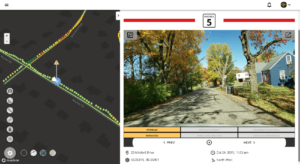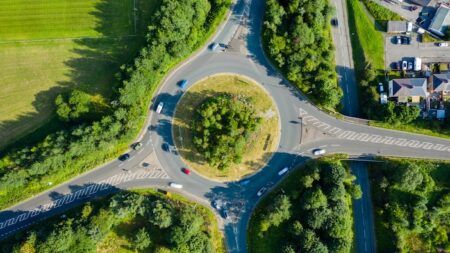Carnegie Mellon University (CMU) spinoff company RoadBotics has announced a ground-breaking option to complement its interactive, online pavement assessment platform, that identifies common distresses such as potholes, surface deterioration, and fatigue cracking.
Spun out of CMU’s Robotics Institute in 2016, RoadBotics has raised US$11.4m in venture capital investment to date to help fund its vision of applying technology to not only improve the world’s roads, but also the critical infrastructure that impacts people’s lives on a daily basis. RoadBotics empowers towns and cities to make objective, data-driven decisions about their roads and infrastructure by automating inspections and generating actionable information about road networks. The company’s detailed maps, unbiased ratings, and practical tools save time and money for hundreds of communities across the USA and around the world.
 Historically, most local governments and highways agencies have manually inspected their roads for surface distresses, allowing subjective data to creep into the decision process when making plans for repairs. RoadBotics technology uses machine learning to rate road conditions, making the data objective, and more cost-effective and faster than traditional inspection methods, allowing road managers to adopt a more regular inspection schedule. The company’s system uses a standard smartphone mounted on a vehicle’s windshield to capture roadway imagery that is processed by cutting-edge deep learning artificial intelligence (AI) software to speed up the normally subjective and expensive pavement inspection process.
Historically, most local governments and highways agencies have manually inspected their roads for surface distresses, allowing subjective data to creep into the decision process when making plans for repairs. RoadBotics technology uses machine learning to rate road conditions, making the data objective, and more cost-effective and faster than traditional inspection methods, allowing road managers to adopt a more regular inspection schedule. The company’s system uses a standard smartphone mounted on a vehicle’s windshield to capture roadway imagery that is processed by cutting-edge deep learning artificial intelligence (AI) software to speed up the normally subjective and expensive pavement inspection process.
RoadBotics’ online GIS-based RoadWay platform offers decision-makers an easy way to monitor their road networks, communicate budget needs to city council, or resolve citizen complaints. The roads and photos of each 10 feet (3m) long segment are color-coded from green to red, allowing anyone from a council member or a citizen to a field operator to use it without any prior knowledge or training. The RoadBotics pavement assessment process is unique because it only requires a smartphone for data collection unlike more expensive van scans or time-intense manual audits.
With the RoadWay platform’s new Individual Distress Identification feature, users can now identify 18 different distresses that fall into six categories that are critical to pavement management including potholes, ‘alligator cracking’, surface issues, and fatigue issues. The first-of-its-kind functionality allows RoadWay users to view these distresses in every 10-foot section of road on a pothole-specific layer that can be seen in conjunction with a color-coded map of their entire network. Agencies can now strategically plan for treatment of existing problems and proactively manage maintenance to save their town or city time and resources, while also being able to clearly communicate the condition of their road network to their staff, local government officials, and citizens.
“The new ability to identify distresses makes RoadWay the most robust tool our clients have to make data-driven decisions about their road network,” said RoadBotics’ head of product, Matt Lucas. “This critical and actionable data gives them a more comprehensive perspective, allowing them to create efficient management plans.”
RoadBotics president and co-founder, Benjamin Schmidt, added, “The ability to identify these distresses is another major advance that we have taken to make affordable and objective infrastructure assessments a reality to every community in the world.”





